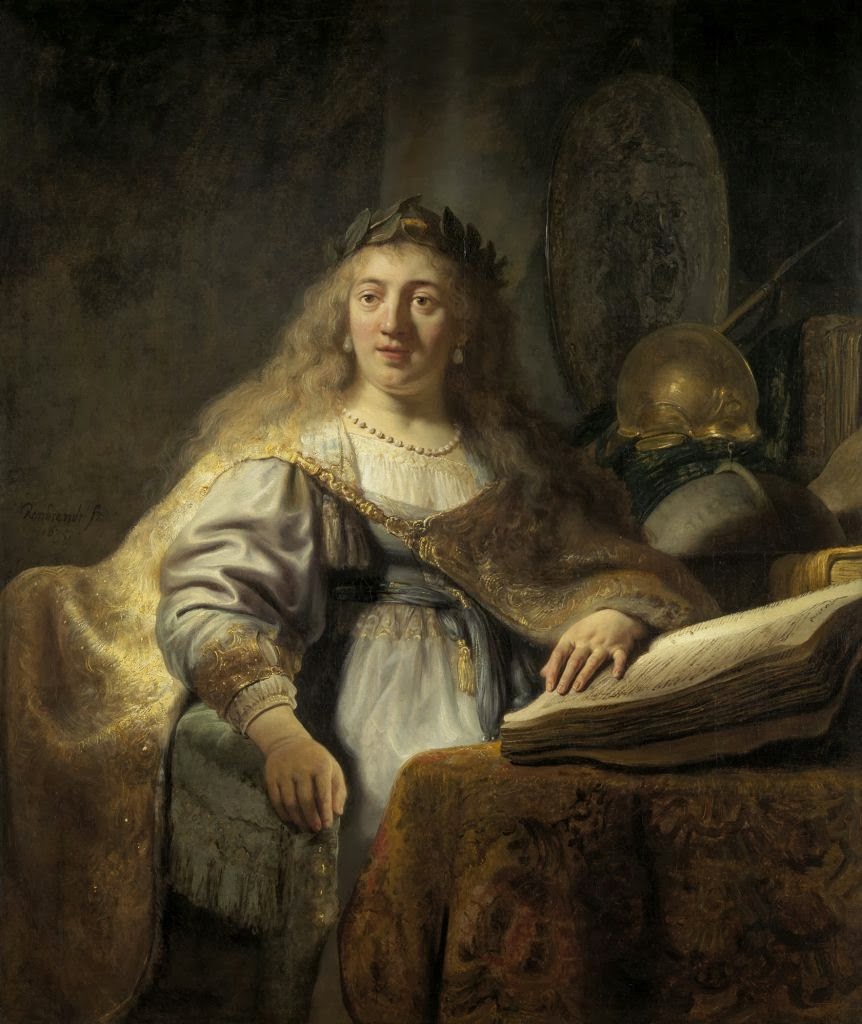Rembrandt: A Subtle Artist Who Glows in the Dark
 |
| Minerva in Her Study, 1635 |
Recently, thanks to the power cuts caused by the damage to the Fukushima nuclear reactors, many of us have been rediscovering exactly what light is again. Instead of something unvarying and instantly available at the flick of a switch, to be taken for granted, it has once again become altogether more tentative, vacillating, and mysterious. Such a reawakening to the subtle qualities of non-electric light is the best preparation for the exhibition now on at the National Museum of Western Art: “Rembrandt: The Quest for Chiaroscuro.”
Rembrandt (1606–1669) is one of those painters who frequently disappoint the young and inexperienced. Attracted by what is one of the greatest reputations in art, modern audiences are often baffled by his canvases that can seem dull and tenebrous, populated as they are by puffy, sombre-faced figures, almost cloaked in shadows. In the age of electric effulgence in which we live, the twilight world created at the end of Rembrandt’s brush seems somehow funereal.
A casual look at this exhibition is likely to reinforce this negative impression as the show mixes a couple of early unsightly apprentice pieces and a handful of better paintings with around a hundred black and white prints made by the artist.
The exhibition has ticked the two all-important boxes for local audiences of (a) bringing in works by a recognized “brand name” artist and (b) finding a Japanese connection. Although, it has to be said that this is perhaps the most tenuous link to Japan ever at an exhibition of this kind, hanging as it does on triviality that Rembrandt sometimes used Japanese paper imported via the Dutch trading post at Dejima to print on.
 |
| Self Portrait as an Oriental,1631-34 |
But while Rembrandt’s oeuvre may often seem dark and murky, it is the lack of light in his paintings that make us so much more aware of it and of how it moves, shimmers, reflects, and merges into shadows. More than his draughtsmanship, it is his depiction of light which gives us a feeling of air and depth, and which creates the illusion of reality on the canvas.
Minerva in Her Study (1635) is a particularly good example. Although the subject is rather ludicrous, purporting to be the Roman goddess of wisdom swotting away over an open book possibly in an attempt to retain her academic laurels (included), Rembrandt nevertheless gives the scene a palpable reality through his mastery of light.
In addition to gentle tonal gradients and the skillful modelling of shadow, he also employs a rough impasto to make certain items like the table in the foreground and the pearls on her necklace appear nearer. He also uses smoother polished brushstrokes to make the background recede. The meticulousness of his methods can be observed by closely observing each and every pearl and noticing that the impasto highlights subtly diminish as they supposedly curve away from us. It is in such fine touches as this that Rembrandt is to be enjoyed.
 |
| The Angel Appearing to the Shepherds, 1634 |
With almost ten times as many prints as paintings at the show, much hinges on this lesser known aspect of Rembrandt’s art. Because of the limitations of etching compared to oils, namely its lack of colour and texture, in his prints the artist tends to use light in a simpler and more narrative manner that echoes Caravaggio’s rather stagy painting style.
This exhibition has obvious omissions and some definite shortcomings, but anyone visiting it should not be overly distracted by these, as Rembrandt’s art will always reward close study and attentive viewing. Just like radioactivity, he also glows in the dark, but in a much more benign way.
C.B.Liddell
The Japan Times
22nd April, 2011





















Post A Comment
No comments :